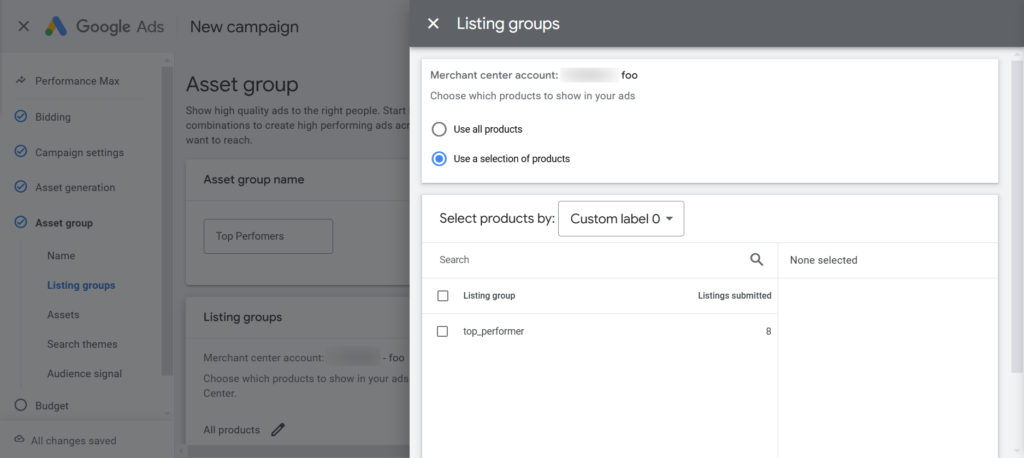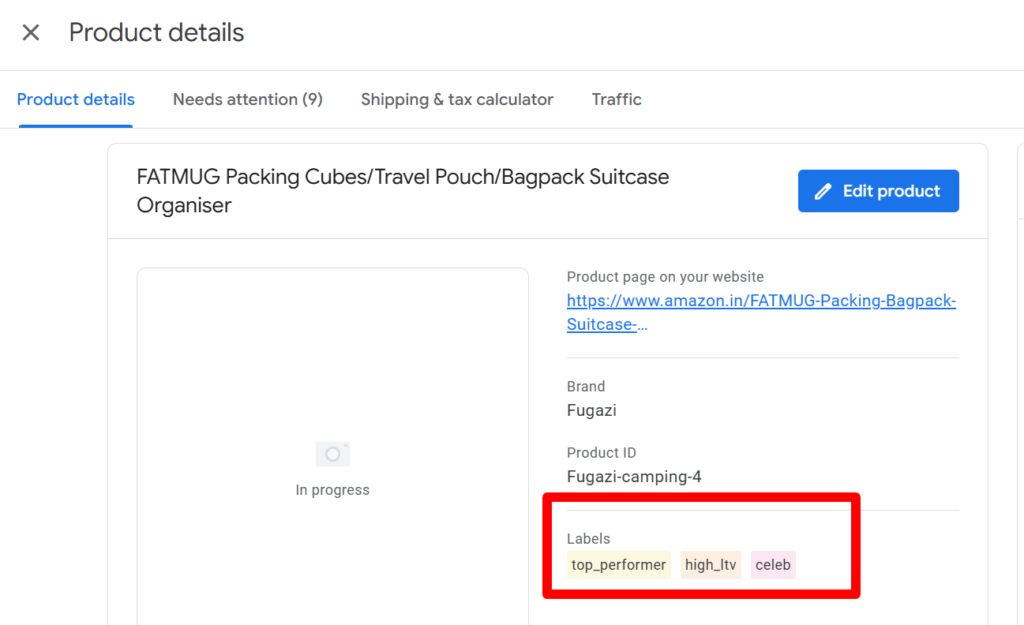Adding Value for Shopping Campaigns in the Age of Performance Max

Media buyers and e-commerce brand teams used to have a lot of controls at their discretion for guiding product campaigns on Google Ads and other platforms, and lots of opportunity to put their own insights to work. The big ad platforms have made things much simpler since then, by letting the marketer simply declare what their objectives are, and letting their algorithms determine the who, what and where.
While undeniably fast to get off the ground, these ‘easy button’ campaigns can lack the extra oomph that comes from industry expertise and good 1st party data. Here’s how marketers can use Listing Groups to take back a measure of influence and bring optimization capabilities to the next level.
The Role of Product Merchandiser
In brick and mortar shopping experiences, the store manager adds value to customers by setting up their store in an attractive and useful way and associates can guide shoppers using the in-store materials. For consumers, it’s quickly evident when a store has put thought into a store’s layout and organization. And smart store managers have planned layouts to maximize cart size and with repeat purchases in mind.
The goal is to do the same thing on Google’s properties, and to avoid getting commoditized completely.
Listing Groups for Performance Max Campaigns
Google’s Performance Max campaigns tap into all kinds of inventory to deliver your message, including Shopping listings, display ads, search and video. For e-comm brands that want to capture bottom-of-funnel demand, Shopping listings are especially valuable. But Google will mix and match all of your assets in a brute force approach to try and determine the winning combinations. If you’ve got a large catalog, it can be a challenge to get your product images, supporting display assets and headlines to line up correctly.
Listing Groups allow you to provide a little guidance.
They are a subgroup of your total pool of products and can be based on product attributes like brand, product category and price. Once you’ve got your Listing Groups set up, you can associate your other assets, like graphics, videos and headlines, to match up. So if you’ve got a group set up specifically for high-end camping tents for example, you can run images that feature lifestyle images of adventurers in extreme conditions, and headlines that tout performance and durability value props. And you can prevent your campaigns from reaching audiences with an odd combination of premium tent products, images of unrelated water sports, and headlines about cookware from your outdoor brand.
Go Beyond Categories to Add Your Expertise
It’s easy to see how using product categories can improve the coherence of your campaign creative. But you don’t have to stick with the default attributes for creating segments. With a little planning, you can get creative and layer on your own knowledge of your product and industry to take things further.

For example, grouping listings by previous ad performance lets you double down on products that are in demand by assigning dedicated supporting assets. You can do this by assigning values to the custom label fields available in your product feed for Merchant Center
First look at product-level CTR, conv rate and Cost/Conv. Value using Merchant Center. For an even more valuable view, look at your shopping cart data on which first time order products are correlated with highest LTV. Once you’ve determined that a product is a winner, update your product feed to include a value like top_performer in one of your custom label fields.

Now, back in Google Ads, you can create a Listing Group that includes only the products with that top_performer designation. For this premium inventory, consider creating dedicated headlines, graphics and videos, just like a brick & mortar store would use their end caps.
Bring Your Own Business Acumen
There are many ways that you can use custom labels to represent your unique view of your industry in your data, to separate yourself from your competitors.
- Profit margin – Your knowledge of your product costs, including non-obvious costs like shipping and return percentage, can help create a view of which purchases mean the most to your business and which are a drag on profitability.
- Lifetime value – which products are highly specialized and appeal specifically to your ideal customer profile? A $10 titanium spork may not leap out as a valuable product to advertise because of the low price point. But only an ultralight hiker would care about their hobby enough to concern themselves with shaving mere ounces off of their pack – they are likely to be a high LTV prospect.
- Product and brand exclusivity – If you’re a retailer with hundreds of brands, some of them may be relatively difficult to find, while other generally popular brands are available just about anywhere. Create separate Listing Groups featuring your obscure products where you can avoid ultra competitive auctions and make your ads stand out with custom creative not usually assigned to long tail products. You’ll typically enjoy lower costs and higher conversion rates. Note – you don’t have to address each rare product to demonstrate that you’ve got a deep selection. A headline for dehydrated meals like “Backpacking meals from escargot to haggis” gets the point across.
- Premium asset availability – If you work with influencers or celebs including product endorsement images or testimonials, you can use custom labels to earmark these products and make sure these assets are assigned to the right products.
While Performance Max campaigns may seem like a loss of control for marketers, careful use of Listing Groups can help you regain the reins of your campaign. Design your groupings based on your unique knowledge of your product line and the market you serve to add deeper insights than what Google’s AI could do alone.
